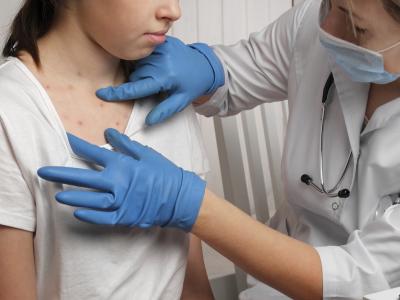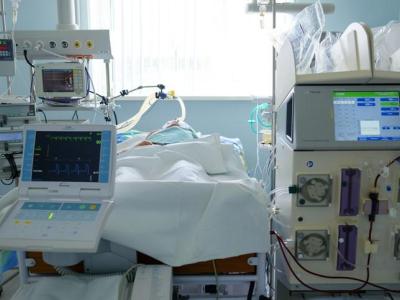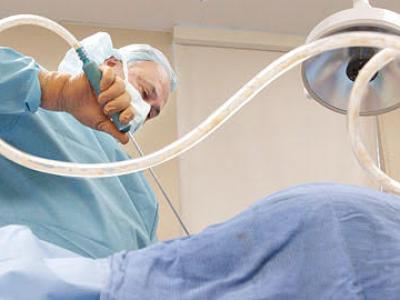Our weekly wrap-up of antimicrobial stewardship & antimicrobial resistance scans
Antibiotic sales are rising on Canadian farms, report finds
Originally published by CIDRAP News Nov 23
Canada saw an increase in the sales of antibiotics for use in food production animals in 2020, according to a report released this week by the Canadian government.
Data from the Canadian Integrated Program for Antimicrobial Resistance and Surveillance (CIPARS) show that the overall sales of antibiotics intended for use in production animals (food animals and horses) rose by 6.5% from 2019 to 2020, and by 7.5% when accounting for the number of animals and their weights (animal biomass). The increase was primarily driven by increased sales of antibiotics for use in beef cattle, pigs, and veal calves, as sales of antibiotics for use in poultry and aquaculture declined and sales of antibiotics for dairy cattle, horses, dogs, and cats remained stable.
The report notes that, after adjusting for the underlying biomass, there were approximately 1.8 times more antibiotics sold for use in production animals than for people.
Antimicrobial resistance surveillance on Canadian farms revealed a mixed picture. In poultry and grower-finisher pigs, the trend in resistance to three or more antibiotic classes declined in Escherichia coli, and Salmonella and Campylobacter from pigs also showed lower rates of multidrug resistance. But resistance to ciprofloxacin continued to rise in Campylobacter from broiler chickens and healthy feedlot cattle.
CIPARS also detected colistin-resistant E coli and Salmonella isolates from three surveillance sources.
Clinical trial will examine early transition from IV to oral antibiotics
Originally published by CIDRAP News Nov 23
Researchers at Johns Hopkins University have received $10 million to conduct a clinical trial that will investigate whether early transition to oral antibiotic therapy from intravenous (IV) administration improves outcomes in patients with gram-negative bloodstream infections.
The funding from the Patient-Centered Outcomes Research Institute will support a randomized controlled trial that will involve roughly 1,200 patients with bloodstream infections at eight US hospitals. The patients will be randomly assigned to two groups—one that receives IV antibiotics for the entire duration of therapy and one that starts on IV therapy, followed by an early transition to oral antibiotics.
Patients with bloodstream infections caused by gram-negative bacteria, such as Escherichia coli, have been traditionally treated with IV antibiotics. If patients are discharged home or to a skilled nursing facility, a vascular catheter is required to continue the treatment.
"However, because vascular catheters used to place IV lines can pose a risk of a secondary infection and other complications, and because IV therapy imposes limitations on patient mobility and quality of life, we want to see if oral antibiotic treatment—pills—given at an early stage in the process could achieve outcomes on par with those of IV antibiotics," co-principal investigator Pranita Tamma, MD, MHS, who directs the Pediatric Antimicrobial Stewardship Program at Johns Hopkins Children's Center, said in a university press release.
Tamma and her colleagues say they will use a novel analytical approach to determine efficacy and safety.
Novel malaria combination drug to be tested in phase 3 trial
Originally published by CIDRAP News Nov 23
Pharmaceutical company Novartis and the Medicines for Malaria Venture (MMV) announced today that they are moving forward with a phase 3 trial for a novel combination drug for patients with uncomplicated malaria.
The phase 3 trial will test the efficacy of ganaplacide/lumefantrine-solid dispersion formulation (SDF) against the current standard treatment, artemether-lumefantrine, in patients with acute uncomplicated malaria caused by the Plasmodium falciparum parasite. The hope is that the drug could be an alternative to artemisinin-based treatments, which are being increasingly challenged by artemisinin-resistant strains of malaria.
Ganaplacide is a novel agent with a new mechanism of action, while lumefantrine-SDF is an optimized formulation that allows for once-daily administration. The combination has shown the potential to clear malaria infections, including those caused by artemisinin-resistant strains, and block the transmission of the malaria parasite.
Artemisinin-resistant malaria is widespread in the Greater Mekong Subregion of Southeast Asia, and in recent years has shown evidence of emergence in Africa, where 90% of malaria cases and deaths are reported.
"We are increasingly seeing parasites with decreased sensitivity to artemisinin, even in Africa," MMV Chief Scientific Officer Timothy Wells, PhD, said in a Novartis press release. "If the Phase 3 trial is successful, this new combination will increase the number of options available to countries and help save the lives of children at risk of this devastating disease."
Ganaplacide/lumefantrine-SDF was granted Fast Track and Orphan Drug designations by the US Food and Drug Administration in August 2022.
The trial will be conducted at clinical sites in Burkina Faso, Mali, Gabon, Niger, and other sub-Saharan African countries.
UK surveillance report shows declines in resistant infections, antibiotic use
Originally published by CIDRAP News Nov 22
The latest surveillance report from the United Kingdom's Health Security Agency (HSA) shows that the overall burden of antimicrobial resistance (AMR) in England is declining, but the trend varies by pathogens, regions, and demographic groups.
Data from the ninth annual English Surveillance Programme for Antimicrobial Use and Resistance (ESPAUR) report shows that the burden of AMR declined by 4.2% from 2017 to 2021, mainly driven by a reduction in the incidence of Escherichia coli bloodstream infections (BSIs). The rate of resistant BSIs was highest in London and lowest in the East Midlands.
In addition, the total number of drug-resistant infections in England fell by 9.1% from 2018 to 2021. Although some of that decline could be the result of COVID-19 restrictions, the authors of the report note that it puts the country on target to meet its National Action Plan (NAP) goal of a 10% reduction in antibiotic-resistant infections from the 2018 baseline by 2025.
But the report also notes that severe antibiotic-resistant infections rose by 2.2% in 2021 compared with 2020, and that drug resistance appears to have a greater impact on ethnic minorities and socially deprived groups. Nearly 33% of BSIs in people in the Asian or British Asian ethnic group were caused by a resistant organism in 2021, compared with 20.9% of White people. And people in the most deprived 10% of the country had higher notification rates for carbapenemase-producing gram-negative bacteria than did those in the least deprived 10%.
"Understanding the impact of ethnicity, deprivation, regional divergence, along with potential confounders, remains an important area of investigation," the HSA wrote in a blog post.
Antibiotic consumption data, meanwhile, shows that antibiotic use in England fell by 0.5% from 2020 to 2021, and by 15.1% from 2017 to 2021—a decline that exceeds the goals of the NAP but is also likely linked to reduced use of healthcare services during the pandemic.
"Unless we continue to use antibiotics appropriately and continue to drive down infections overall, the trend may not be sustained," the HSA said.
European survey shows need for more antibiotic knowledge
Originally published by CIDRAP News Nov 21
A survey published last week by the European Commission shows fewer Europeans reported taking antibiotics in the past year than in previous years, but many are taking them for the wrong reasons, and lack of knowledge about antibiotics remains a problem.
The results of the Eurobarometer survey, conducted from Feb 21 to Mar 21, 2022, reveal that 23% of Europeans say they have taken oral antibiotics in the previous 9 to 12 months, down from 32% in a 2018 survey and the lowest recorded level since the survey was first conducted in 2009. But the proportion of respondents who reported taking antibiotics varied widely—from 15% in Sweden to 42% in Malta. Roughly 8% of respondents said they had taken antibiotics without a prescription.
In addition, more than 30% of respondents reported taking antibiotics for illnesses that don't require them, such as cold (11%), flu (12%), and COVID-19 (9%), while others took them for illnesses that require additional testing, like bronchitis (12%). More than half of respondents (53%) said they didn't have a test to find out the cause of their illness before they started taking antibiotics.
When quizzed on their knowledge about antibiotics, only 50% knew that antibiotics are ineffective against viruses, while 62% knew that antibiotics are ineffective against colds. Only 28% answered all four antibiotic knowledge questions correctly. More than 8 in 10 (82%) were aware that unnecessary use of antibiotics makes them less effective, and 67% knew that taking antibiotics can lead to side effects like diarrhea.
EU Commissioner for Health and Food Safety Stella Kyriakides said the survey results highlight one of the reasons antimicrobial resistance has emerged as a major public health crisis.
"Antibiotics kill bacteria, not viruses. Overusing antibiotics feeds the resistance of bacteria to our medicines," Kyriakides said in a press release. "The survey we present today shows why this risk exists."
The authors of the report say improving public awareness about antibiotics and antimicrobial resistance will be crucial in efforts to reduce antibiotic overuse and misuse, and that education campaigns need to target people who have incomplete knowledge.
Candida auris cases rising in Europe, survey finds
Originally published by CIDRAP News Nov 21
An epidemiologic survey conducted by the European Centre for Disease Prevention and Control (ECDC) in April 2022 shows Candida auris cases are rising across the continent, researchers reported last week in Eurosurveillance.
The survey shows a near doubling of C auris cases—and countries reporting them—from 2020 to 2021, from 335 reported by 8 countries in 2020 to 655 reported by 13 countries in 2021. In both years, most cases were reported by Spain (260 in 2020 and 331 in 2022) and Italy (49 in 2020 and 242 in 2021). Most of the cases (63.2%) reported in 2020 and 2021 involved colonization, while bloodstream and other type of infections accounted for 15.3% and 10.3% of cases, respectively.
Cases of the multidrug-resistant yeast reported in Europe in 2020 and 2021 were considerably higher than in previous years. Overall, 1,812 C auris cases have been reported by European Union/European Economic Activity (EU/EEA) countries since 2013. But prior to 2021, the number of cases was driven by a large outbreak in one country. Eleven EU/EEA countries had not detected any C auris cases until 2021.
From 2019 to 2021, five countries (Denmark, France, Germany, Greece, and Italy) reported 14 C auris outbreaks—defined as two or more cases with an epidemiologic link. At least two of the reported outbreaks (in Germany and Italy) involved COVID-19 patients or units dedicated to the care of COVID-19 patients. One country (Spain) reported regional endemicity.
The multidrug-resistant yeast, which spreads easily in healthcare settings and can cause severe and deadly infections in patients with compromised immune systems, was first discovered in 2009 in Japan. Since then, it has spread around the world.
"The reported interregional spread as well as regional endemicity in one country show that C. auris is in the process of establishing itself as a healthcare-associated pathogen in the EU/EEA, similar to other countries such as the United States," the authors of the report wrote. "European-level surveillance therefore needs to improve with case definitions and standardised and regular case-based reporting."
The World Health Organization recently listed C auris as one of 19 fungal priority pathogens.












